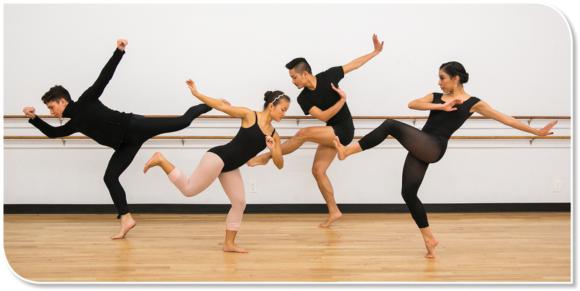Dance-specific conditions of practice
This is an excerpt from Motor Learning and Control for Dance by Donna Krasnow,Mary Virginia Wilmerding.
Two conditions of practice that are specific to dance or have dance-related concerns are improvisation and the use of mirrors. These tools are used in other fields, particularly in the arts and in athletics. For example, musicians regularly use improvisation in both composition and performance. Weightlifters often work with mirrors to examine their lower limb alignment. How improvisation and mirrors influence or affect dancers requires special focus. Improvisation is widely used as a creative tool in dance, but its potential use in motor learning has not been investigated. More thoroughly studied is the use of play in animal models, and the evidence is clear that playing leads to greater flexibility and resilience in unexpected circumstances as well as better problem-solving skills. The use of mirrors is widespread in dance training, although little knowledge exists of their effect on skill acquisition or of some of the negative consequences on self-esteem and motivation. Dancers and teachers can enrich dance training by addressing these two conditions of practice and assimilating them more effectively into dance classes.
Improvisation
Improvisation offers another way for dancers to explore variability of practice. Dance improvisation is the process of creating movement in a spontaneous and experimental manner, and it is facilitated through a variety of sensory explorations. Different approaches to improvisation include systems such as Laban Movement Analysis (LMA), based on the work of one of the pioneers of European modern dance, Rudolf von Laban; Body-Mind Centering, founded by artist and therapist Bonnie Bainbridge Cohen; and contact improvisation, founded by experimental choreographer Steve Paxton. Historically, improvisation has been regarded as a tool for early childhood development, creativity in choreographic processes, group sensitivity work, and as a means of employing nontraditional elements in the dance context, such as voice work. Voice work in dance can involve audible text or singing or random sounds as part of the score for a dance. To date, little has been done to examine the potential for motor learning through the use of improvisation as a complement to traditional dance training. However, several aspects of improvisation may contribute to the acquisition of motor skills for dancers.
How Improvisation Can Aid Various Facets of Dance Training
One facet of dance training that is particularly difficult for beginners is the multitude of elements to consider simultaneously, including counts, phrasing, directions, level changes, shape design, dynamics, and technical challenges such as balance and multi-limb coordination. In the midst of this array of elements to process, dancers must comprehend fundamental concepts, such as use of space and levels or use of weight, which can be considered movement principles. Improvisation can provide a context in which dancers self-select the various components while maintaining a primary focus on a singular concept of the movement. For example, a teacher may wish to focus on the use of weight in a combination going to the floor and returning to stance. Allowing the dancers to determine their own timing, method of descent, and body shaping enables them to concentrate on the concept of release of weight without multiple elements to achieve.
Improvisation also changes the main focus of the work by means of attentional mechanisms. When performing the skills within set choreography, a dancer might only attend to an ideal prescribed by the teacher or the dancer (top - down attention), with arousal being a determining factor (the fear of doing the movement incorrectly). Improvisation allows the student to notice or observe features of the movement or environment (bottom - up attention), which allows for a student-based (discovery) learning situation. In the previous example of the use of weight, after the improvisation the teacher can ask the students to describe something that they noticed about releasing their weight to the floor.

Dancers can explore balancing through the use of improvisation.
Learn more about Motor Control and Learning for Dance.
More Excerpts From Motor Learning and Control for DanceSHOP

Get the latest insights with regular newsletters, plus periodic product information and special insider offers.
JOIN NOW


